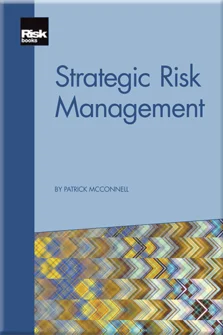Managing Strategic Execution Risks
Introduction
What is Strategy?
What is Strategic Risk?
Strategic Governance Risk
Different Strategies, Different Risks
Strategic Risk Assessment
Organic Growth Strategies
Acquisition Strategies
Productivity Strategies
Innovation Strategies
Restructuring Strategies
Evolution of Strategic Risks – A Case Study
Summary of Strategic Risks from Case Studies
Strategic Risk-Management Framework
Managing Strategic Positioning Risks
Managing Strategic Execution Risks
Summary
This chapter describes some tools and techniques for managing the risks inherent in the execution of a chosen strategy. The chapter discusses different challenges facing boards when executing strategies, in particular the need to first identify and then to manage the risks in what are highly complex programmes of work. The chapter discusses concepts, such as the strategic-execution risk-management framework (SERMF), introducing models to help manage the risks that will arise in the execution of all strategies. Strategic objectives and the importance of developing strategic key risk indicators (SKRIs) to monitor the progress of a strategy’s execution are also discussed.
At this point it is worth noting what has been called Cobb’s paradox:11This is named after Martin Cobb, ex-CIO of the Treasury Board of Canada Secretariat. “We know why projects fail, we know how to prevent their failure – so why do they still fail?” (emphasis added). One of the key reasons why projects still fail is that boards and management do not always learn the lessons of the past, believing that they know better. This is form of hubris and a cognitive bias known as the “planning fallacy” (Kahneman 2011)
Copyright Infopro Digital Limited. All rights reserved.
As outlined in our terms and conditions, https://www.infopro-digital.com/terms-and-conditions/subscriptions/ (point 2.4), printing is limited to a single copy.
If you would like to purchase additional rights please email info@risk.net
Copyright Infopro Digital Limited. All rights reserved.
You may share this content using our article tools. As outlined in our terms and conditions, https://www.infopro-digital.com/terms-and-conditions/subscriptions/ (clause 2.4), an Authorised User may only make one copy of the materials for their own personal use. You must also comply with the restrictions in clause 2.5.
If you would like to purchase additional rights please email info@risk.net











